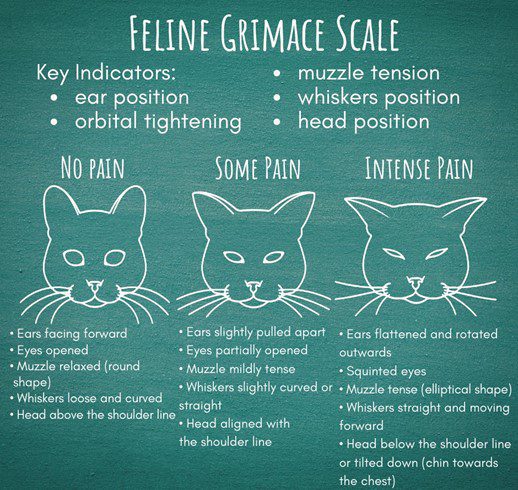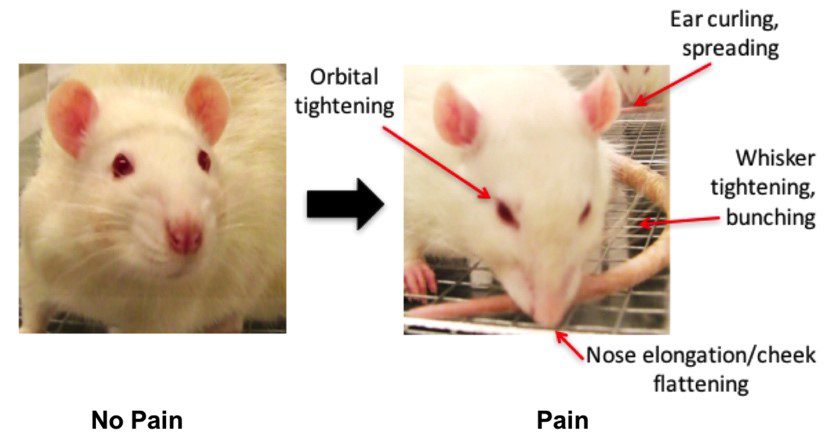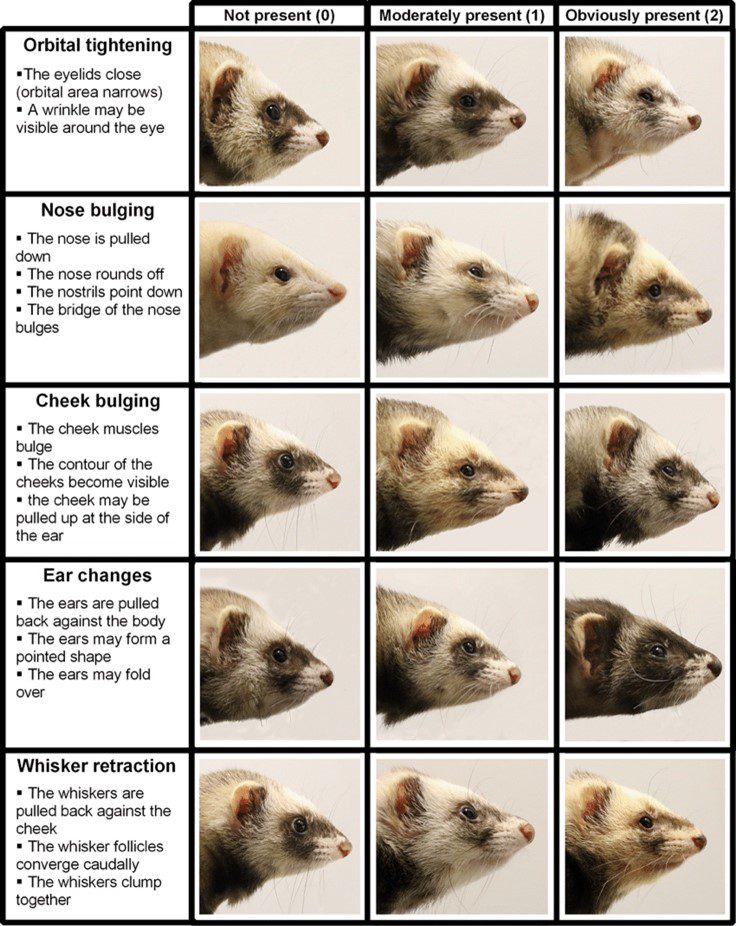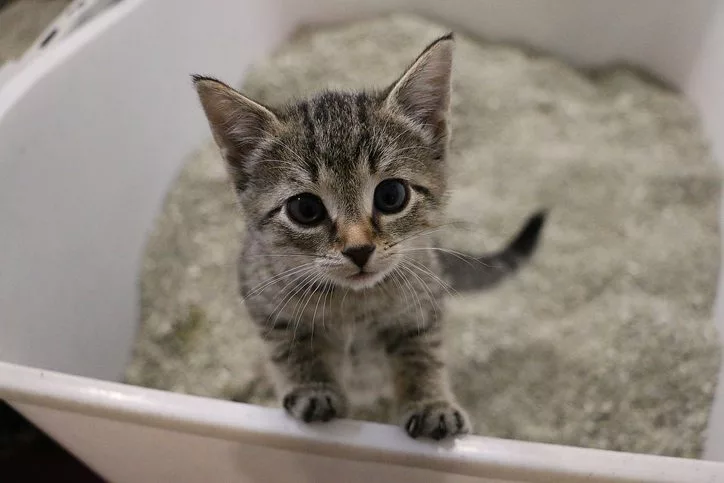Pain in your Pet
As a veterinary professional, the most common fallacy owners hold about their animals is that their beloved pet is not in pain because they are not complaining with vocalization, limping or lethargy. I cannot emphasize enough how incorrect this is. Animals are evolutionarily designed to hide their pain. If you are a wild animal, especially a small animal like a cat or bunny, you are food if you are weak and pain makes you weak. In general, the smaller your pet is the more likely they are to hide the signs of pain. This is a very broad generalization of course. Even large dogs can act very brave and hide their pain from us because it’s their job to protect us and they don’t want to appear weak in our eyes. But think of bunnies, cats and guinea pigs. In the wild if they show pain they are targeted by predators. These animals will be the absolute last to show any obvious signs of pain and they require some very astute observations to determine whether or not they are painful.
At Shepherd of the Hills Veterinary Clinic, we are VERY conscientious of pain control in our patients. Pain medications are not optional in any surgical procedures we provide and we try to address identified pain in all our patients to ensure best quality of life. Even as a veterinarian it is sometimes difficult for us to see mild signs of pain. When your pet is here at the clinic for an appointment they may try to act even more stoic by hiding their pain and ailments because now there is a stranger around that they may distrust. It is often difficult for us to discern pain from stress, anxiety or fear as the signs can be similar. We depend on a collaborative approach working with you, the pet owner, to help us identify and address the root cause of your pets pain if they have any. The purpose of this blog is to enhance your pet pain recognition IQ to best help us keep your furry friend happy and participating in life for years to come.
What do we know about pain?
Pain is very individualized. This means that everyone’s tolerance for pain and expression of pain is different. This is why we must be diligent when assessing our pets for pain. Pain is considered a vital sign that is just as important as blood pressure, heart rate, body temperature, etc. It is that important because pain is scientifically proven to be detrimental to health, especially chronic pain. Pain lowers the immune system, delays healing and decreases quality and longevity of life.
An ounce of prevention is worth more than a pound of treatment. Once a painful pathway is established to the brain, over time it can develop from a trail in the woods to a superhighway where even a small mildly painful stimulus is experienced by your pet as extremely painful. We call this “wind up”. Our best pain management plan is to prevent wind up. Preventing this pain cascade requires lower doses of pain medication over a longer period of time. Lower doses mean less side effects. This subsequently also allows your pet to live a happier healthy longer life. We should aim our therapies at preventing pain in our beloved pets rather than waiting for pain to set in and then treating it.
What are the signs of pain in my pet?
Vocalization, limping and behavior changes are the most common presenting signs that owners will bring their animals in for when they may be in pain. For many progressive disorders such as arthritis, unfortunately, this means we possibly missed some of the more subtle early signs of the disease process where intervention could be more effective for long term management. These signs are not solely specific to pain. Vocalization and behavior changes could also be due to excitement, fear, stress, etc.
- Limping: Limping is usually an obvious sign of pain but not all animals, especially cats, limp when they are experiencing pain. So relying on an animal to show a limp to prove they are in pain is not going to be a rewarding assessment in most species other than dogs.
- Changes in behavior: Changes in behavior can be as simple as a pet who was outgoing and extroverted has now become introverted. This could be a sudden or gradual change as they age. Many people say “He’s just slowing down in his old age.” But is he because its just lack of energy? Or is he in pain and that is why he is slowing down? The opposite is also true. An animal who is normally opinionated, cantankerous and introverted who suddenly becomes clingy and affectionate may be telling you they are in pain. Do not disregard personality and behavior changes in your pet. This is a sign to investigate for signs of pain or whatever else may be wrong.
Below are some guidelines for evaluating pain in various species. Most species have what we call a Grimace Scale. I’m sure you’ve seen similar charts in human doctor’s offices with smily faces and sad faces. We have developed these for some of our patients as well.
Feline:

Rabbit:

Rodent: Mouse, hamster, gerbil, etc.

Ferret:

Guinea Pig:
A grimace scale has not been developed in guinea pigs yet.
- Teeth grinding, whimpering, flinching or uncomfortable being touched, sitting hunched, hair erected, abnormal breathing pattern (slower or faster than normal), hopping, limping, shivers, quivering, reluctant to move or walk around, not eating.
Dogs:
A grimace scale is impossible to do for dogs because of the vast differences in the physical appearance of their faces. What may be a sign of pain in one breed could be totally different in another breed. Dogs are a bit unique in this aspect.
- Licking, biting, scratching certain parts of body, decreased appetite, withdrawn from normal social habits, changes in sleeping or drinking, lapse in house training, sleeps more, restless, reluctance to move around, difficulty getting up or lying down, trouble getting comfortable, trembling or shakes, protects certain parts of their body, doesn’t want to be held or picked up, hiding, vacant staring, glazed eyes, enlarged pupils, flattened ears, pants at rest, hunched with abdomen and front end down on the ground, lays on side.
If you think you notice any of these signs in your pet then call your vet and schedule an appointment for a pain assessment.
I have determined my pet is in pain. What do I do now?
Contact your veterinarian so that you can develop a pain management protocol that is best for your pet and fits within your budget. Just like with humans there are MANY pain management options BUT most human pain medications are not safe for pets so do NOT give Tylenol, ibuprofen, etc to your pet. Some of these medications could potentially kill your pet with even a single dose.
Solensia and Librela
These are monoclonal antibody alternatives that are safe pain management options for your pet. Solensia is for cats and Librela is for dogs. It’s given by subcutaneous injection and lasts a month. It prevents the body from starting the inflammatory cascade by using monoclonal antibody therapy. It is very safe and can be given to all pets of all ages with any health status and unless your pet is allergic. There are rare instances of neurologic side effects and if this occurs contact your vet immediately.
NSAIDs
Non-steroidal Anti-inflammatory medications are one of the mainstays of treatment for pain management. Cats, dogs and pocket pets have their own versions of NSAIDs that are relatively safe to administer, but they cannot take human NSAIDs. There are many options of NSAIDs available to your pet, which kind you chose is based on the patient’s underlying health status, organ function and affordability for the owner. Some can be very safe to give on a daily basis while others must be used with caution. As with all medication we want to give as much as our pet needs to be comfortable but as little as possible to avoid side effects. It is also important to follow the directions EXACTLY. If your pet is still experiencing pain at the prescribed dose do NOT increase the dose. Contact your veterinarian to see what else may be needed to manage the pain. More is not always better.
Opioids and Opioid Derivatives
Some of these drugs work very well for severe pain but may have sedative side effects that are undesirable. While they are widely considered very safe and effective care must be taken when prescribing and administering these medications as we don’t want to turn our pets into zombies and they have to be monitored very closely by veterinary and pharmaceutical professionals and the DEA. These drugs may not always be the best choice for your pet financially, legally or because of the side effects.
Steroids
Steroidal Anti-inflammatories are very powerful pain medications but they come with a plethora of side effects and are not safe for many patients. Veterinarians usually prescribe steroids for short term severe pain management or as a last resort or hospice situations.
All Natural Pain Medication
CBD Oil, Glucosamine, Chondroitin, turmeric and Fish Oil are some of the most common natural remedies we give to animals to help with pain.
- Fish oil is a natural anti-inflammatory that works just like an NSAID only weaker. It is very helpful in reducing the amount of NSAID medication needed thus decreasing cost and side effects.
- Glucosamine and Chondroitin are very helpful for musculoskeletal pain associated with arthritis. While you may not see substantial effects outwardly it does help long term by reducing the dose of other medications that are needed and slowing down the progression of arthritis.
- CBD Oil must contain no more than 0.3% THC or we could have undesirable side effects so it is very important to get a pet specific CBD supplement that does not have any more than 0.3% THC concentration.
- Turmeric is not very easy to administer to pets because it tastes very bitter but if it is capsulated in the right dose that is usually easiest. It is a great anti-inflammatory for long term pain control.
If you are suspicious that your pet may be exhibiting symptoms or signs of pain then call us today to set up a veterinary evaluation and we can come up with the best pain management options for your pet. Sometimes if we are uncertain if a pet is painful, we can do a trial of pain meds and gauge the response. If we get a positive result then we can safely assume the animal was in pain and pain meds are needed. Sometimes a pet is so stoic we are not able to tell they are in pain even by the above observations so we utilize a pain medication trial to make a diagnosis based on treatment response.
Remember the goal of any pain management program is to improve your pet’s participation in favored physical and family activities so they can maintain good blood circulation, muscle tone, and positive attitude, all things which decrease the progression of chronic and or degenerative disease processes. A body in motions stays in motions.
Recent Posts
Understanding Parvovirus: What Every Pet Owner Needs to Know
Parvovirus is one of the most serious — and preventable — diseases that can affect our furry…
Heat Exhaustion and Heat Stroke
Summer is and should be a time of outdoor fun and activities. Swimming, boating, fishing, hiking, camping,…
Why is my Cat Pooping Outside the Litterbox in Branson, MO?
If your cat has been pooping outside the litterbox, you’re probably feeling frustrated and worried at the…
6 Tips When Caring for a Senior Dog in Branson, MO
Taking care of a senior dog can be difficult for some pet owners. It’s hard to watch…
Is Dog Neutering in Branson, MO Necessary? 9 Reasons Why It Is
For dog parents, especially first-time dog parents, the decision to neuter your sweet little boy dog can…
About Shepherd of the Hills Veterinary Clinic
Founded in 2018 by Dr. Amanda McGinty, we are a full-service animal hospital with a passion for pets and a commitment to community. We offer high-quality, competitively-priced care for Branson-area cats, dogs, rabbits, and pocket pets. At Shepherd of the Hills Veterinary Clinic, we want to provide the best healthcare possible, so we are fully equipped with state-of-the-art imaging and laboratory testing. In addition to carrying the latest technology, we value education and best-in-class care. Therefore, we are Fear Free certified, and Dr. Amanda utilizes a holistic approach using up-to-date modern medicine in addition to herbal and alternative therapies.







